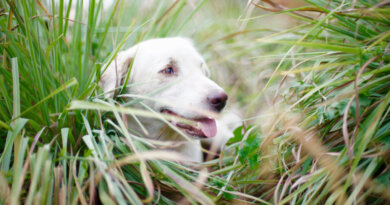How Much Do You Really Know About This Breed?
By Janice Jones |Last Updated 11-30-2022
If you are looking for a tiny dog with a lot of character, Russian toy terriers are the perfect dog breed for you.
The Russian toy terrier, which is also known as the Russkiy Toy Terrier is one of the smallest dog breeds in the world.
However, this is not a dog that is aware of its small size – it is active and bold. It is always ready to protect and defend its owner and act like a guard dog.
The Russian terrier is a family dog. It gets very attached to its owner and family and is extremely loyal.
This is a dog that gets along with everybody and becomes an important member of the family.
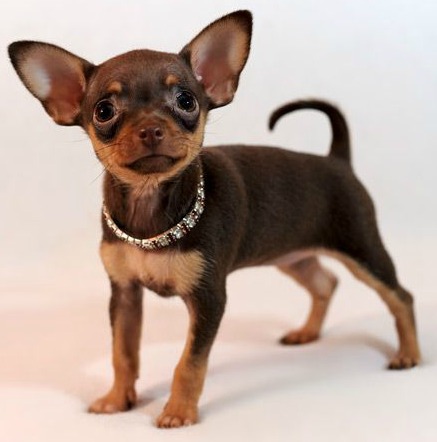
Quick Facts About Russian Toy Terriers
Other Names Used: Russkiy Toy Terrier, Russian Toy Dog, Russian
Terrier, Moscovian Miniature Terrier, and Moscow Toy Terrier
Affiliation: AKC, UKC, FSS: Toy Breed
Height: 8 – 10 inches (20 – 26 cm)
Weight: 3 – 6 pounds (1.3 – 2.7 kg)
Coat Type: Two different types:
Long-haired, Smooth-haired
Colors: blue & tan, black &
tan, brown & tan, sable, red, brown sable
Country of Origin: Russia
Activity Level: Energetic to low energy
Life Expectancy: 10-12 years
Good with Children: good with older gentle children
Good with other pets: yes
Dog Breed Ratings Got You a Little Confused?
Here’s a little help in understanding them
- Playfulness: Most Playful = 5 Least Playful = 1
- Affection: Most Affectionate = 5 Least Affectionate = 1
- Friendliness Towards Strangers: Most Friendly = 5 Least = 1
- Good With Children: Great= 5 Not Good with Children = 1
- Good With Dogs: Great = 5 Not Good Around Dogs = 1
- Good With First Time Owners: Fine=5 Not Appropriate = 1
- Exercise Required: Extensive Daily Exercise = 1 Minimal = 1
- Ease of Training: Very Easy = 5 Difficult = 1
- Watch Dog: Excellent Watch Dog = 5 Minimal = 1
- Grooming: Time Consuming = 5 Minimal = 1
- Shedding: Heavy Shedder = 5 Minimal = 1
- Cold Tolerance: Well Tolerated = 5 Poor Tolerance = 1
- Heat Tolerance: Well Tolerated = 5 Poor Tolerance = 1
History of the Breed
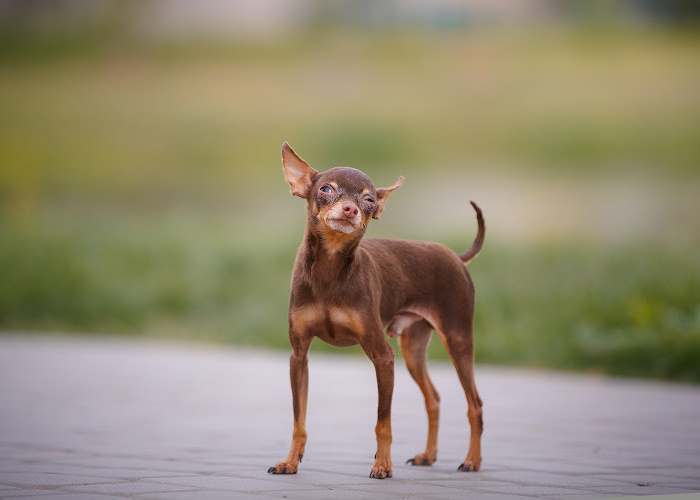
The Russian Toy Terrier has a long
history. It was bred from the English Terrier and remained isolated in Russia
for a very long time.
Although there is first evidence of the English Terrier
in Russia in 1726, the breed became popular only in the second half of the 19th century.
By the beginning of the 20th century,
the Russian Toy was one of the most popular dogs in the country. However, their
number was greatly reduced between the 1920 and 1950 following the October
Revolution.
This was mostly due to the fact that these dogs were linked to
aristocracy.
The breed suffered a big step back at that time. When the Russian
Toy Terrier was finally restarted, most of the dogs were not pure bred and few
had pedigrees.
Russia’s isolation led to the creation
of this whole new breed and to its standardization. When the Iron Curtain fell,
many new dog breeds were imported and the popularity of the Russian Toy
decreased.
But, by the 1990, it was back up, all thanks to a new generation of
breeders. It is only in the 1990, that the Russian Toy Terrier became known
outside of Russia.
The breed was finally recorded in the Foundation Stock
Service in 2008 and has gained full status with the American Kennel Club in 2022.
Personality of this
Small Breed Dog
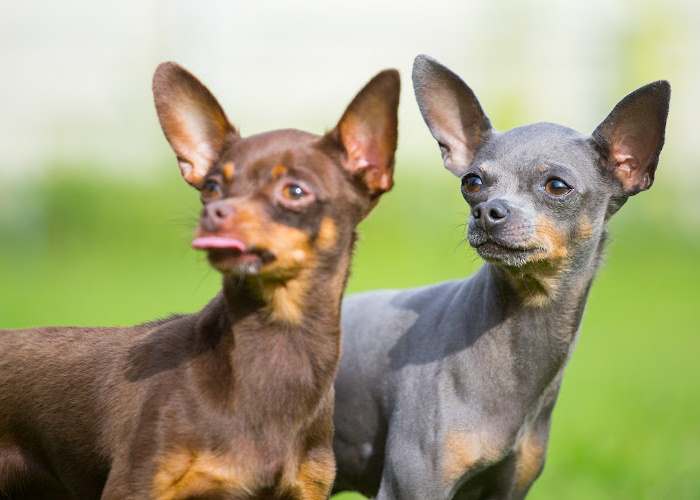
The Russian Toy Terrier is a dog that
is known for being lively and active.
They love to run around and play, and
require their fair share of training and exercise. At the same
time, the Russian Toy Terrier has a very calm personality.
In fact, people are a big part of this
dog’s life. They are ideal companions and are very devoted to their owners.
They get along great with everybody.
Age is not a factor: Russian Toys are
great with children and can be a superb companion for an elderly person. These
dogs even get along with the other animals.
The Russian Toy Terriers are often
described as being perky, friendly, and active. They are neither shy nor
vicious dogs.
Even though the Russian Toy Terrier is
tiny, it is always ready to jump in and protect its owner. They are also very
easy to train as they are smart and always eager to please their owners. A
Russian Toy Terrier is a dog that can
bring a lot of joy and fun to a household.
It is also a dog that can be your
constant companion. Not only does the Russian Toy Terrier love being with its
owner, but its size make it extremely easy to take it with you wherever you go.
Differences Between a Russian Toy Terrier and a Chihuahua
These are two separate breeds but look fairly similar to the average person. It is easy to see the similarity and not surprising that people can’t tell them apart. They are both small, members of the toy breeds grouping, and both come in both long and short coat varieties.
According to the American Kennel Club, are somewhat longer than tall with shorter legs. Russian Toys are square, with long legs. Both can have long hair, but Chihuahuas have a double coat whereas the Russian Toy normally does not have much of an undercoat.
Finally, Chihuahuas all colors are permitted within the AKC, but Russian Toy Terriers only have 6 standard colors:
- Red
- Red & Brown
- Red Sable
- Brown & Tan
- Black & Tan
- Blue & Tan
The breed is officially know as the Russian Toy.
Grooming Russian Toy Terriers
Russian toy terriers can be long-haired
and smooth-haired. The long-haired terriers have long hair on their ears, which
gives them a very unique and adorable look.
Because they have different coats,
the long-haired and the smooth-haired terriers have different grooming needs.
Obviously, the long-haired Russian Toy Terrier needs more care. Its coat needs
to be groomed once a day.
It also requires a bath more often than the
smooth-haired RTT does.
The smooth-haired Russian Toy Terrier
only needs to be brushed once a week. It can also be wiped off with a damp washcloth.
A bath is still a necessity, and the smooth-haired terrier needs to be
bathed at least once a month.
When bathing both of these types of dog, it is
crucial not to get water inside their big ears. It is important to take care of
the Russian Toy Terrier’s ears and clean them regularly.
Don’t neglect their dental health. Brush their teeth as often as possible using a dog toothpaste and brush. This breed is know for its dental problems.
Dogs as young as one year of age begin to accumulate tarter on their teeth. Brushing will reduce the plaque and lessen the number of times that your dog will need dental cleaning by a veterinarian.
Health Issues
Fortunately, the Russian Toy Terrier
has very few medical concerns and is generally quite healthy.
They are not predisposed
to cancer or other diseases of the liver, prostate, gastrointestinal tract, or neoplasm.
But they have been known to suffer from bone fractures, patellar luxation, and severe
allergies to flea and rabies medication.
Some experience teeth issues
when changing from the puppy to adult teeth. Those who have retained deciduous (baby teeth) will need to have them removed by a veterinarian.
Like all small breed dogs, Russian Toys have a tendency to develop periodontal disease, which is the build-up of tooth tartar. Regular brushing can reduce can help prevent surgical dental cleaning.
Care
The Russian Toy terrier makes an excellent choice for singles, couples and families with older children. Retirees love these little dogs because they are so portable and can travel easily.
Due to their size, they do well in small apartments, but because of their barking tendencies, discretion is encouraged.
Both experienced and novice dog owners will fall in love with this breed.
Training
These dogs are intelligent and very loyal to their owners, two traits that make it easy to train them.
They can master basic commands and do relatively well with house training. They are terriers, nevertheless and as such retain that terrier personality. Expect to see that stubborn side at one point or another.
Energy / Activity Level
Many will tell you that these dogs are just right when it comes to activity level — not too energetic, not too lazy.
Much of their energy needs can be met by following you around the house, running in an enclosed yard or taking a daily walk.
Just like most small breed dogs, the Russian Toy Terrier does best with a well fitted harness rather than a collar. Tracheal collapse is always a possibility with delicate dogs such as these.
Feeding and Diet
The Russian Toy Terrier does well on a high quality dog food that is designed for small breed dogs. Tiny kibble is much easier for them to ingest.
A few daily nutritious treats, especially if used for training purposes is fine, but don’t overdo it as your dog can become overweight.
Fruits and vegetables make great snacks as well as commercially provided snacks that list their ingredients on the package.
A daily supplement doesn’t hurt and some will need extra nutritional support for their hair coat. Omega 3-6-9 fatty acids are helpful for dry itchy skin as is salmon oil.
Problem Behaviors
Although the Russskiy is not a companion dog, they were originally breed to be a watch dog and a ratter. They still retain many of these tendencies.
Barking can be a problem in this breed as well as chasing small animals that may cross their path.
They are protective of their owners and reserved with strangers which may cause some problems when people unknown to the dog comes to visit. They make excellent watch dogs but would not function as a guard dog due to their.
They prefer to be close to their owner and may sometimes suffer from separation anxiety if left alone too long.
Pros of Russian Toy Terriers
- Lively, perky breed
- Very healthy
- Easy to keep in an apartment as long as barking is under control
- Very loyal and friendly with everybody
- Few grooming tasks
- Easy to take along when traveling
Cons of Russian Toy Terriers
- May need your protection when they try
to protect you from other dogs.
- Like all the other
dogs, they need exercise.
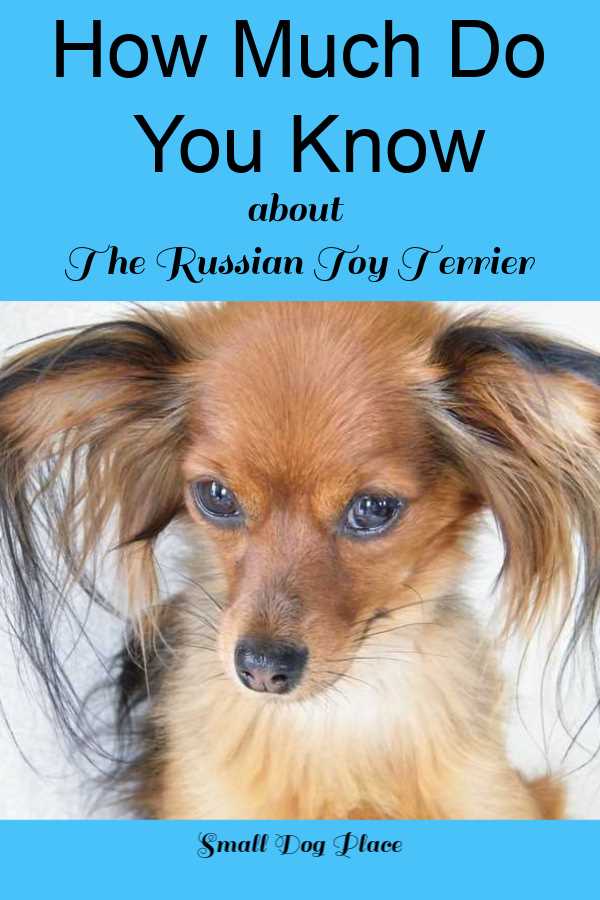 How Much do you Know About the Russian Toy Terrier
How Much do you Know About the Russian Toy TerrierReferences & Further Reading
US BREED CLUB:
Related Breeds
Does This Article Deserve Your Thumbs Up?
We always appreciate your support and encouragement. Your thumbs up means so much to us. Please like this article.
If you find this page or any page on Small Dog Place Helpful, or Useful in anyway, I’d love it if you would click the small heart found on the bottom right of each page.
You can also share or bookmark this page — just click on the:

Free Monthly Newsletter
Sign Up for Our Free Newsletter and get our Free Gift to You.
my E-book, The Top 10 Mistakes People Make When Choosing a Dog (and how to avoid them)



